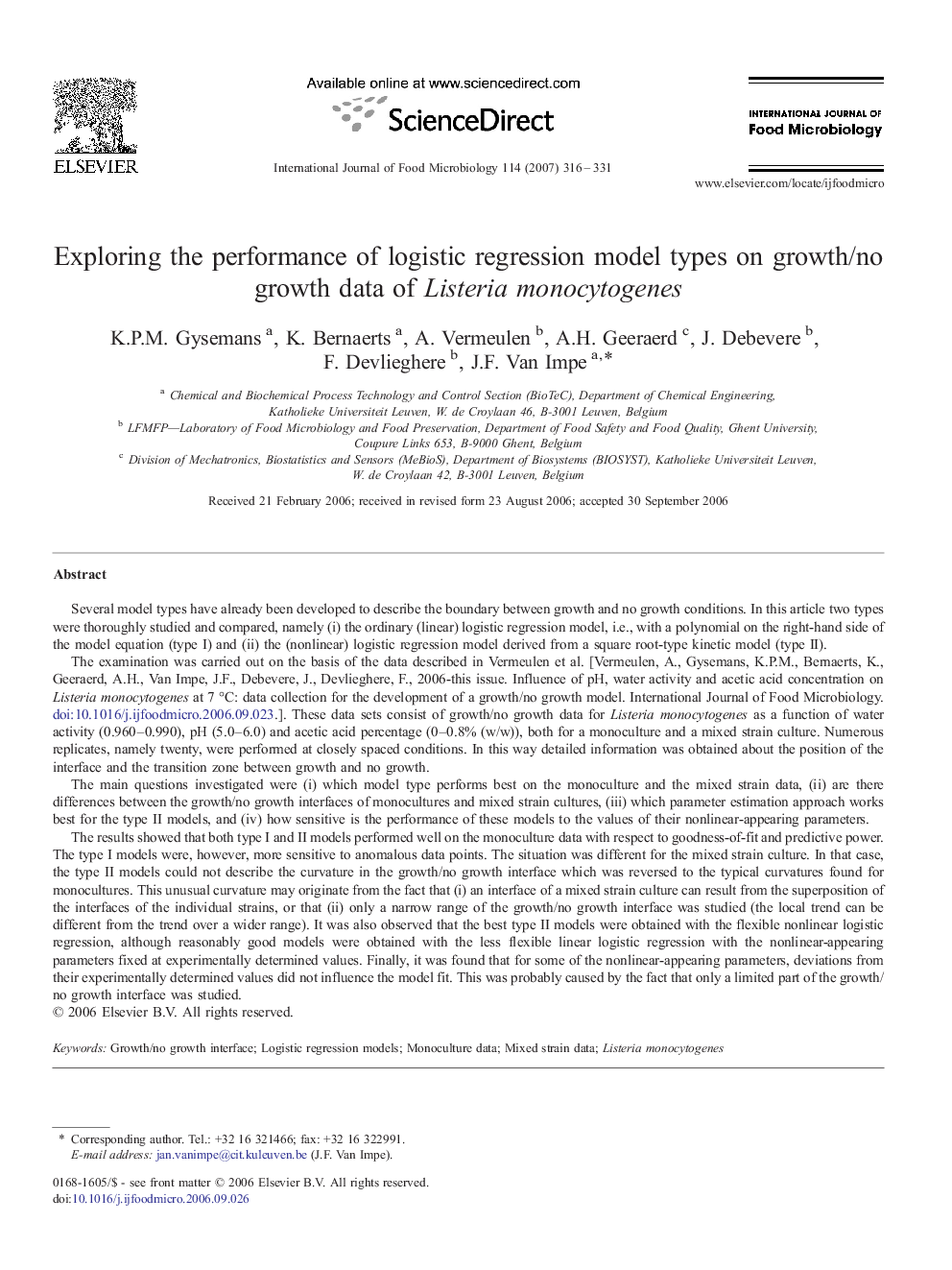| کد مقاله | کد نشریه | سال انتشار | مقاله انگلیسی | نسخه تمام متن |
|---|---|---|---|---|
| 4369668 | 1616751 | 2007 | 16 صفحه PDF | دانلود رایگان |

Several model types have already been developed to describe the boundary between growth and no growth conditions. In this article two types were thoroughly studied and compared, namely (i) the ordinary (linear) logistic regression model, i.e., with a polynomial on the right-hand side of the model equation (type I) and (ii) the (nonlinear) logistic regression model derived from a square root-type kinetic model (type II).The examination was carried out on the basis of the data described in Vermeulen et al. [Vermeulen, A., Gysemans, K.P.M., Bernaerts, K., Geeraerd, A.H., Van Impe, J.F., Debevere, J., Devlieghere, F., 2006-this issue. Influence of pH, water activity and acetic acid concentration on Listeria monocytogenes at 7 °C: data collection for the development of a growth/no growth model. International Journal of Food Microbiology. doi:10.1016/j.ijfoodmicro.2006.09.023.]. These data sets consist of growth/no growth data for Listeria monocytogenes as a function of water activity (0.960–0.990), pH (5.0–6.0) and acetic acid percentage (0–0.8% (w/w)), both for a monoculture and a mixed strain culture. Numerous replicates, namely twenty, were performed at closely spaced conditions. In this way detailed information was obtained about the position of the interface and the transition zone between growth and no growth.The main questions investigated were (i) which model type performs best on the monoculture and the mixed strain data, (ii) are there differences between the growth/no growth interfaces of monocultures and mixed strain cultures, (iii) which parameter estimation approach works best for the type II models, and (iv) how sensitive is the performance of these models to the values of their nonlinear-appearing parameters.The results showed that both type I and II models performed well on the monoculture data with respect to goodness-of-fit and predictive power. The type I models were, however, more sensitive to anomalous data points. The situation was different for the mixed strain culture. In that case, the type II models could not describe the curvature in the growth/no growth interface which was reversed to the typical curvatures found for monocultures. This unusual curvature may originate from the fact that (i) an interface of a mixed strain culture can result from the superposition of the interfaces of the individual strains, or that (ii) only a narrow range of the growth/no growth interface was studied (the local trend can be different from the trend over a wider range). It was also observed that the best type II models were obtained with the flexible nonlinear logistic regression, although reasonably good models were obtained with the less flexible linear logistic regression with the nonlinear-appearing parameters fixed at experimentally determined values. Finally, it was found that for some of the nonlinear-appearing parameters, deviations from their experimentally determined values did not influence the model fit. This was probably caused by the fact that only a limited part of the growth/no growth interface was studied.
Journal: International Journal of Food Microbiology - Volume 114, Issue 3, 20 March 2007, Pages 316–331